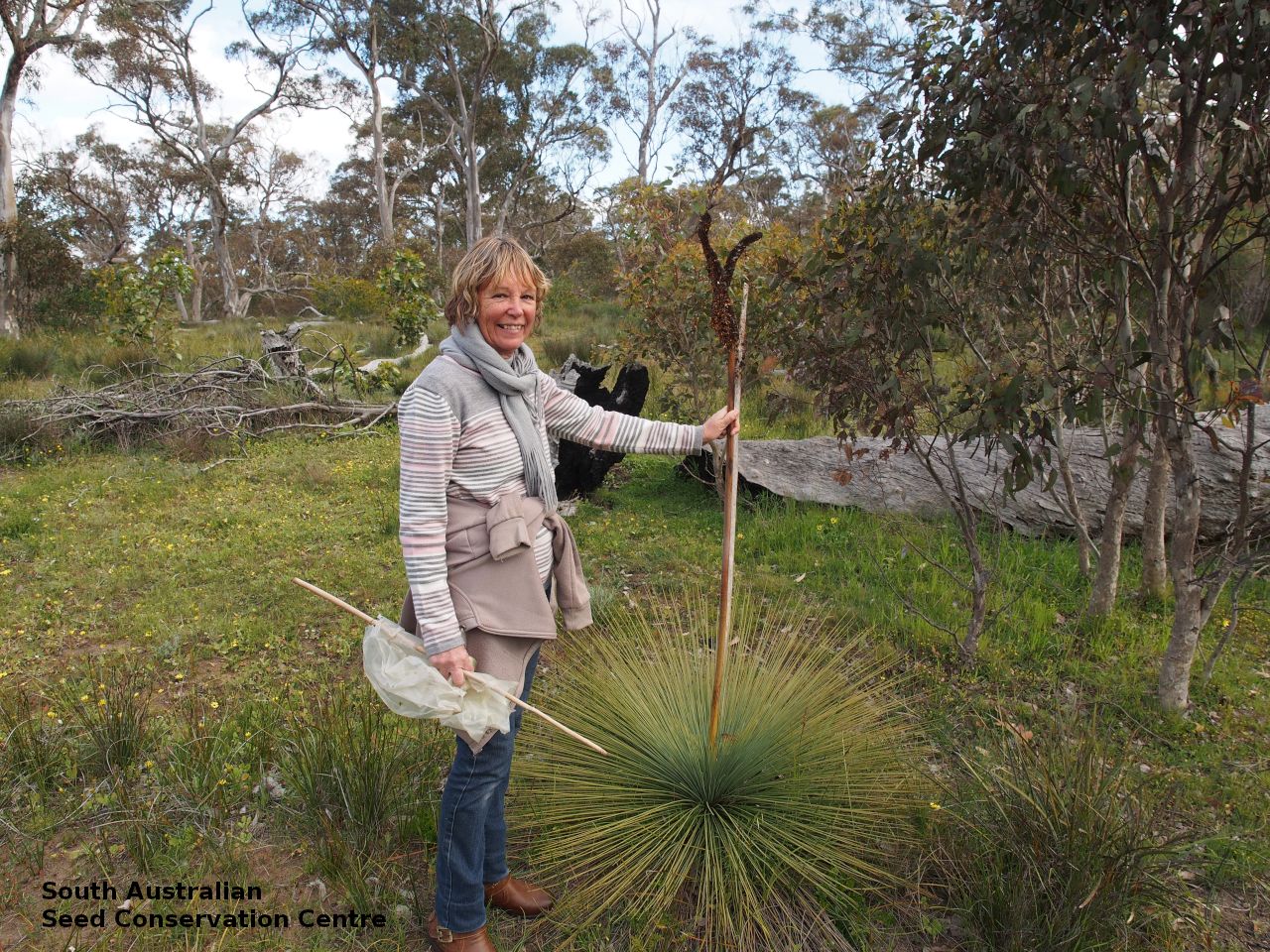

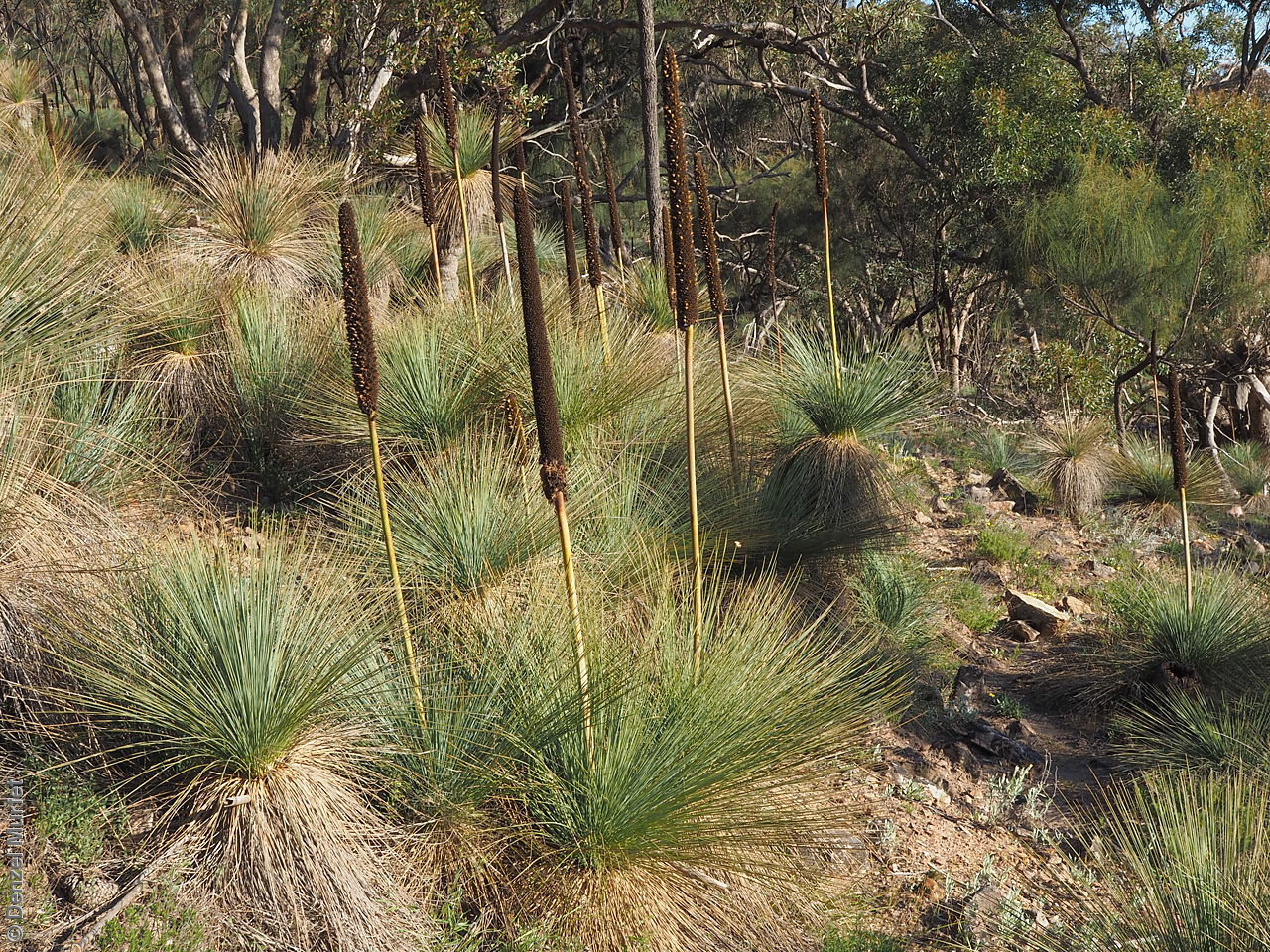

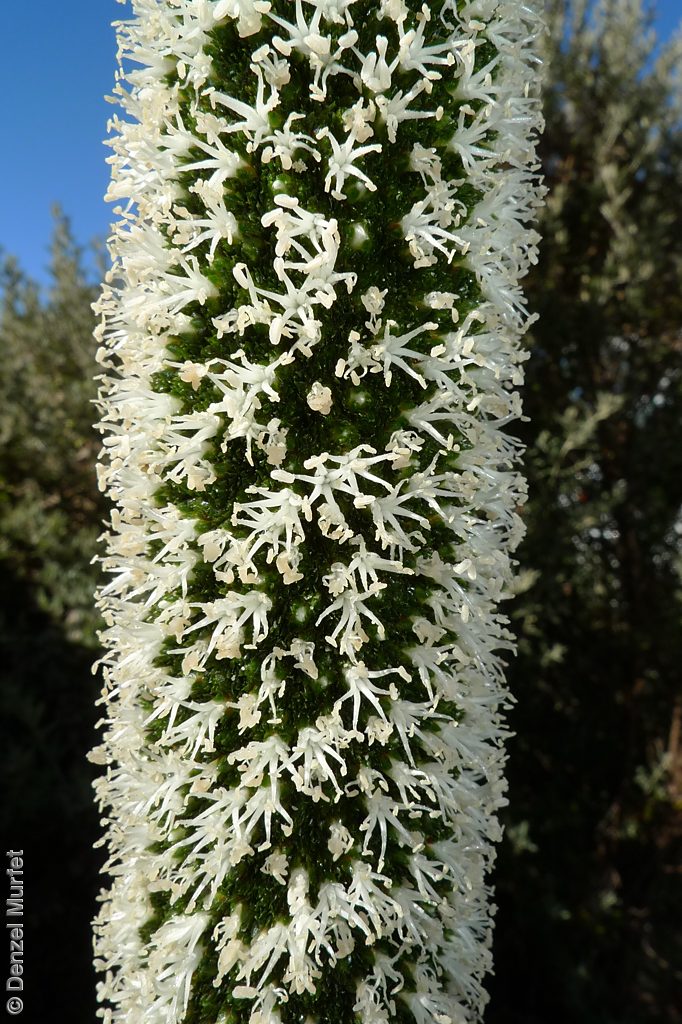

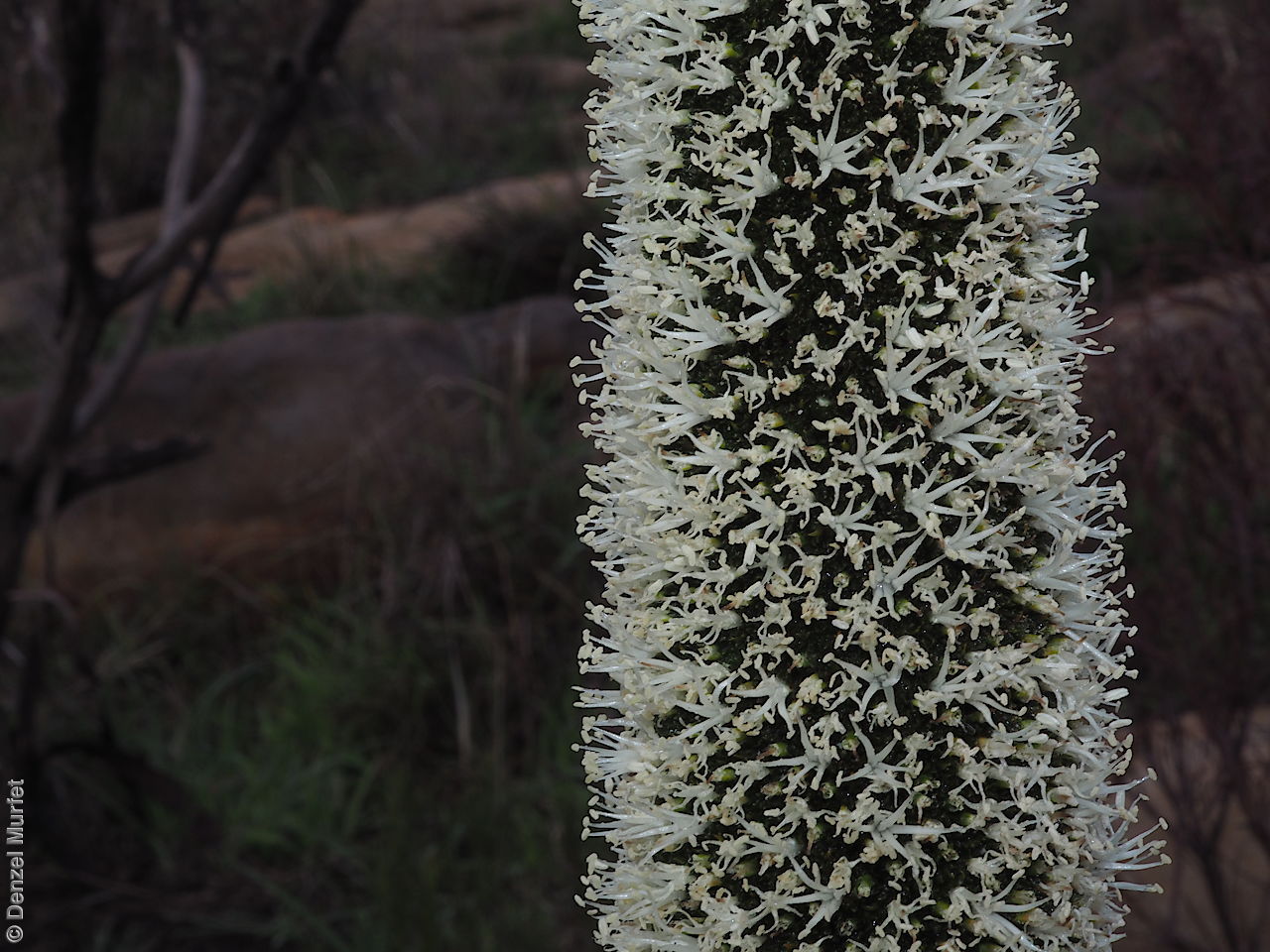



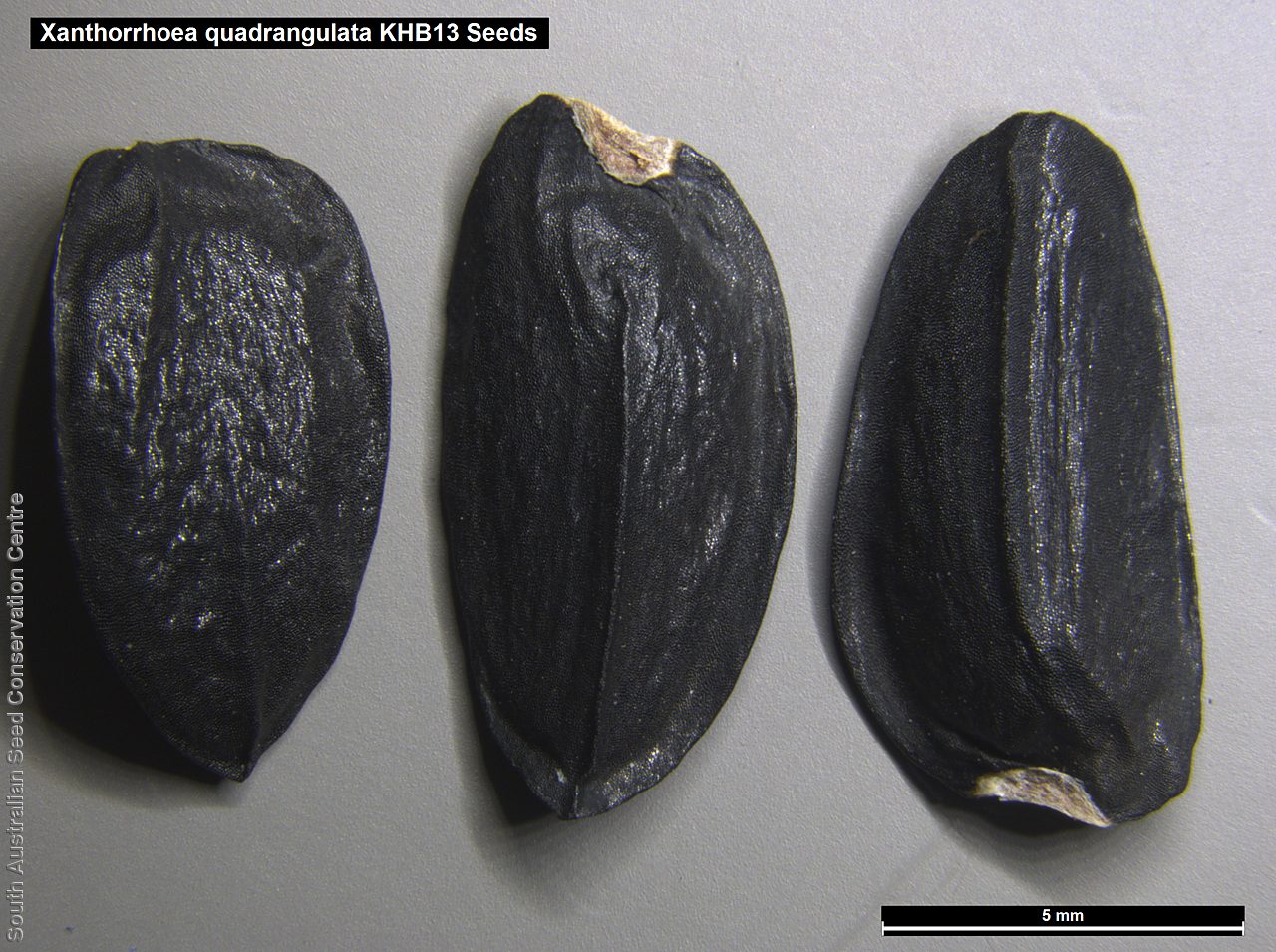

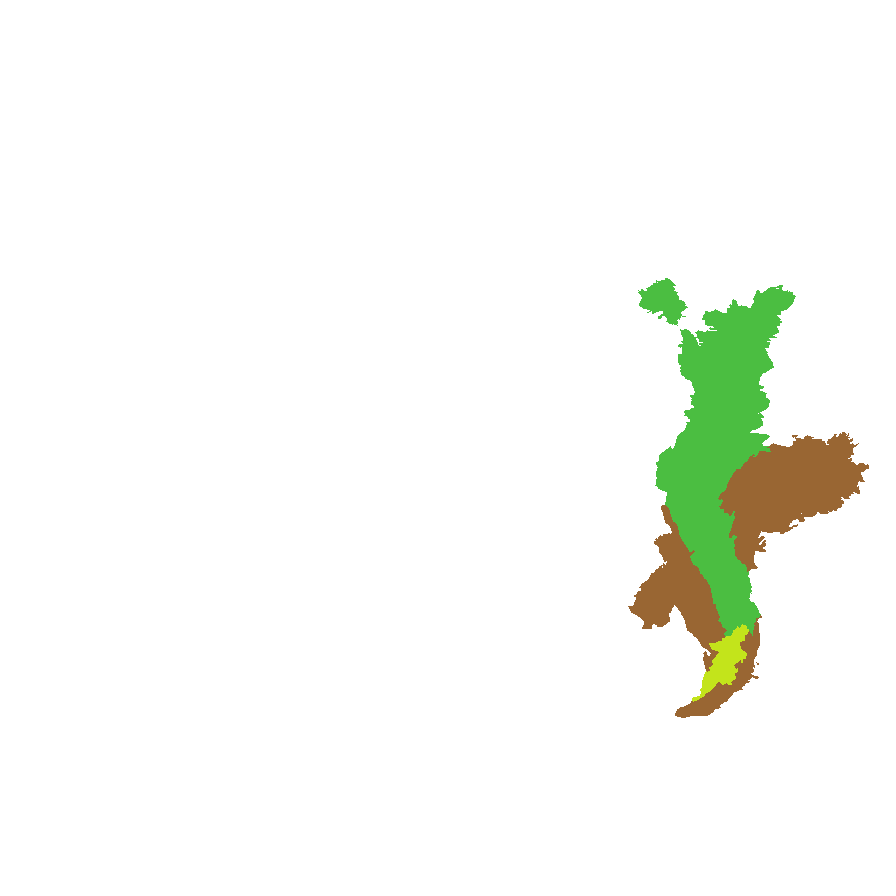
Botanical art
Common names
Mount Lofty Grass-tree
Rock Grass-tree
Etymology
Xanthorrhoea from the Greek 'xanthos' meaning yellow and 'rheo' meaning to flow; referring to the yellow resin that is often produced from the leaves. Quadrangulata from the Latin 'quadra' meaning four and 'angulatus' meaning cornered; referring to the leaves square cross section.
Distribution and status
Endemic to South Australia and found growing on rocky ridges across the Mount Lofty and Flinders Ranges. Native. Common in South Australia..
Herbarium regions: Lake Eyre, Flinders Ranges, Eastern, Eyre Peninsula, Northern Lofty, Murray, Southern Lofty, Green Adelaide
AVH map: SA distribution map (external link)
Plant description
An erect perennial plant with long narrow linear squared leaves arising from a central point and hanging down like a skirt. Older plants have a trunk up to 2 m tall. Flowers are creamy white on a long cylindrical spike. Flowering between March and August. Fruits are numerous woody capsules maturing to dark brown along the spike. Capsule split into three segments, each containing one black seed. Seeds are flat pyramid-like black seed to 10 mm long and 5 mm wide. Seed embryo type is linear under-developed.
Seed collection and propagation
Collect seeds between September and January. Cut off fruit spikes that have mature capsules, usually turning dark brown or beginning to split. The seeds inside should be black. Place the fruit spikes in a tray or bucket and leave to dry for 3-4 weeks or until most of the capsules split. Then shake the fruit spike in a bucket to dislodge the seeds. Store the seeds with a desiccant such as dried silica beads or dry rice, in an air tight container in a cool and dry place. From on collection, the seed viability was high, at 100%. Seeds are non-dormant, viable seed should germinate readily without any treatment.
| Location | No. of seeds (weight grams) | Number of plants | Date collected | Collection number Collection location | Date stored | % Viability | Storage temperature |
|---|---|---|---|---|---|---|---|
| BGA MSB | 11,000 (260.73 g) 11,000 (260.73 g) | 25 | 10-Dec-2005 | KHB13 Southern Lofty | 9-Aug-2006 | 100% | -18°C |
Number of plants: This is the number of plants from which the seeds were collected.
Collection location: The Herbarium of South Australia's region name.
% Viability: Percentage of filled healthy seeds determined by a cut test or x-ray.